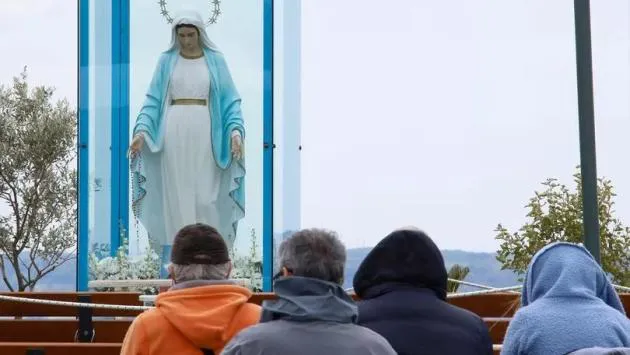## Vatican’s Investigation into the Trevignano Romano Statue: A Case of Faith and Fraud
In a remarkable turn of events, the Vatican has officially declared the famous statue of the Virgin Mary from Trevignano Romano a fake. This statue, owned by Maria Giuseppa Scarpulli, better known as Gisella Cardia, was said to weep tears of blood and perform a series of miraculous phenomena. The news has sent ripples through the community and raised vital questions about faith, belief, and the pitfalls of deception.
### The Claims That Captivated Many
For years, Gisella Cardia claimed that the statue began to cry bloody tears in 2016, asserting it brought her private revelations and carried out supernatural wonders. These claims were compelling enough to attract hundreds of pilgrims each month, all eager to witness what they believed to be a modern miracle. Many found profound meaning in the alleged miraculous occurrences, including a reported incident where the statue seemingly provided endless food to those in need and predictions about global events like the Covid pandemic.
### The Unraveling of the Myth
However, the tide began to turn when skeptical local residents took matters into their own hands. Hiring a private detective, they gathered evidence and enlisted the help of Italian military police to investigate the claims surrounding the «bleeding Madonna.» Their findings pointed to a startling revelation: the tears flowing from the statue’s eyes were not divine but rather pig blood, allegedly applied by Gisella Cardia herself.
### Vatican’s Definitive Ruling
With this evidence in hand, the Vatican has confirmed that the reported supernatural phenomena are fabrications, supported by an investigation from the diocese of Civita Castellana. In a decisive move, they have urged the community to restore peace and tranquility, emphasizing the spiritual well-being of the faithful in Trevignano Romano and the entire diocese.
The Catholic Church also made a significant announcement: it has prohibited priests from conducting any rituals or religious acts tied to these claims. This ban extends to all events organized by the Association Madonna di Trevignano ETS, headed by Gianni Cardia, Gisella’s husband.
### What Can We Learn from This Incident?
This situation raises important points worth considering:
— **Skepticism is Healthy**: While faith plays a critical role in many people’s lives, it’s essential to approach miraculous claims with a critical eye. Investigative measures, though uncomfortable, can prevent the spread of misinformation.
— **The Power of Community**: The role of local residents in seeking truth highlights the collective power of communities. When people come together, they can hold even the most powerful institutions accountable.
— **Faith vs. Fraud**: This story serves as a poignant reminder that not everything labeled as miraculous is genuine. It challenges followers to discern authenticity in their beliefs carefully.
### Conclusion
The Vatican’s decisive action against the Trevignano Romano statue illustrates the complex intersection of faith, community, and the responsibility to uphold truth. As we navigate a landscape filled with claims of the supernatural, it’s vital to engage in open conversations, consider evidence, and ensure that our beliefs are rooted in truth rather than illusion. In the long run, an informed, discerning faith fosters a deeper connection to spiritual beliefs and community values. Let this be an invitation to reflect, discuss, and, most importantly, seek genuine connections in our spiritual quests.






